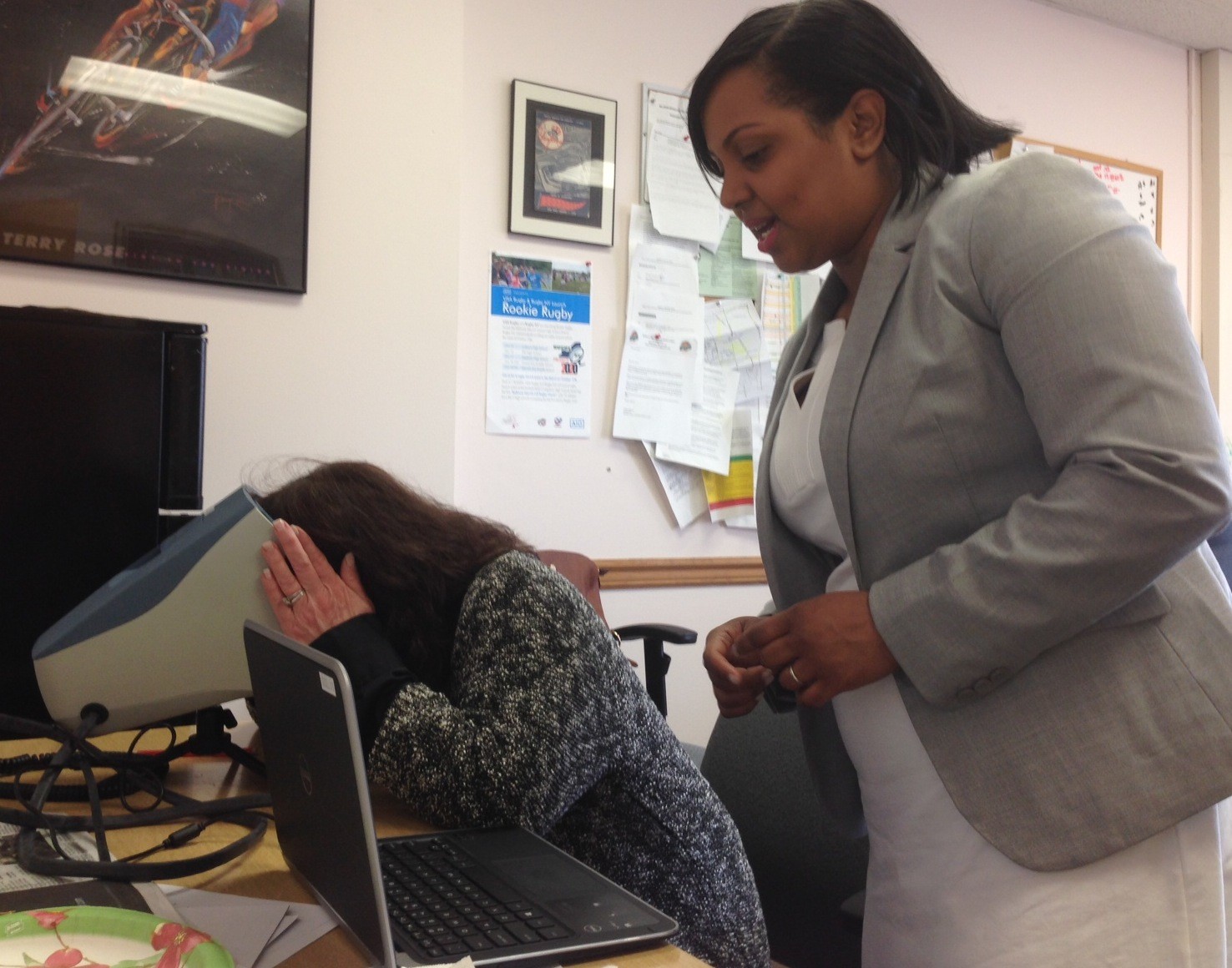Bellmore-Merrick Central District joins in national concussion study
The Bellmore-Merrick Central High School District is taking part in a national study, conducted by the nonprofit Brain Trauma Foundation, that aims to more precisely map the number of high school athletes who suffer concussions.
The U.S. Department of Defense is funding the study, which over the next few years will involve 5,000 student volunteers, who will begin by taking a two-minute baseline test to measure the eyes’ ability to follow an object across a field of view, known as the eye-tracking test.
Omarys Herasme-Parker, the study’s field manager, said the same neural network that controls eye-tracking ability also enables people to concentrate. An inability to track an object and to concentrate could indicate damage to that network, perhaps caused by a concussion.
The Brain Trust Foundation is testing special goggles to measure eye movement. The goggles, about a third the size of a football helmet, link to a laptop computer that provides on-the-spot results.
The baseline test will give researchers a sense about whether high school athletes participating in the study have previously suffered concussions. Then, if a coach or official suspects that an athlete has suffered a concussion on the field of play, the student will be asked to undergo a diffusion tensor MRI, a form of magnetic resonance imaging that compares healthy brain tissue (as measured in the baseline test) with potentially damaged tissue. Diffusion tensor MRIs, which the student-athletes will undergo in the Brain Trauma Foundation’s Manhattan office, are not available to the general public, Herasme-Parker said.
Lost connections
In a concussion, the brain experiences what doctors and researchers call “white matter shearing,” Herasme-Parker said. When the head is struck by a hard blow, particularly from the side, the brain shifts within the skull, first bouncing back and forth and then possibly twisting. That twisting dislodges neural connections.
According to one 1967 study on file at the National Institutes of Health Library of Medicine, white matter shearing can “distort and rupture axons, blood vessels and major fiber tracts.”

 50.0°,
Overcast
50.0°,
Overcast 







